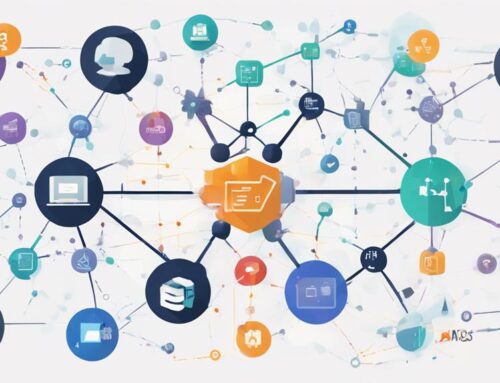To future-proof B2B data strategy with data enrichment, you need to understand the evolving landscape of data challenges and opportunities. By adopting proactive measures to enhance data quality, leverage emerging technologies, and adapt to changing market dynamics, you can stay ahead of the curve in a competitive environment. Embracing a holistic approach that integrates data enrichment seamlessly into your existing processes will be crucial for ensuring sustained success and relevance in the ever-evolving world of B2B data management.
Define Data Strategy Objectives
To future-proof your B2B data strategy, the first crucial step is to clearly define your data strategy objectives. Data quality is paramount for achieving success in this endeavor. By setting clear objectives related to data quality, such as ensuring accuracy, completeness, and relevance, you lay a solid foundation for meeting your business goals effectively.
When defining your data strategy objectives, it is essential to align them with your overarching business goals. Consider how improving data quality can directly impact your business objectives, whether it’s increasing sales, enhancing customer satisfaction, or optimizing operational efficiency. By clearly outlining how data quality initiatives tie back to these goals, you create a roadmap that guides your data strategy towards tangible outcomes.
Identify Data Sources
Ensuring the foundation of your B2B data strategy is robust necessitates a meticulous examination of your data sources. Data quality is paramount in this process, as the accuracy and reliability of your data sources directly impact the effectiveness of your strategy. Start by evaluating the existing data sources within your organization to determine their quality and relevance to your objectives. Identify any gaps or inconsistencies that may hinder the success of your strategy and prioritize resolving them.
Vendor partnerships play a crucial role in expanding your data sources. Collaborating with reputable vendors can provide access to high-quality, up-to-date data that complements your existing sources. When selecting vendors, consider factors such as the accuracy of their data, their data collection methods, and their reputation in the industry. Establishing strong partnerships with reliable vendors can enhance the overall quality and depth of your data, strengthening the foundation of your B2B data strategy.
Collect and Classify Data
Given the foundation laid by identifying your data sources, the next step in fortifying your B2B data strategy is to delve into the process of collecting and classifying data effectively. Data validation is crucial during the collection phase to ensure accuracy and reliability. Implementing measures to validate the quality and integrity of your data will contribute to the overall success of your strategy.
Once data is collected, the next step is data segmentation. This involves categorizing the information into distinct groups based on specific criteria. By segmenting your data, you can target your marketing efforts more effectively, personalize customer interactions, and make informed business decisions. Understanding the different segments of your data allows you to tailor your strategies to meet the unique needs of each group.
Apply Data Enrichment Process
Applying a data enrichment process is a pivotal step in optimizing the quality and depth of your B2B data. Data quality is essential for making informed business decisions, and enriching your data ensures its accuracy and completeness. By utilizing enrichment tools, you can enhance your existing dataset with additional information such as firmographic data, technographic insights, and contact details. These tools help fill in gaps, correct errors, and provide a more comprehensive view of your target audience.
Enrichment tools play a crucial role in standardizing data formats, eliminating duplicates, and enhancing the overall reliability of your database. They enable you to append missing information, validate existing records, and enrich your data with valuable insights. This process not only improves the accuracy of your B2B data but also enhances its relevance and usefulness for marketing, sales, and decision-making purposes.
Incorporating a data enrichment process into your data strategy is key to ensuring that your B2B data remains up-to-date, reliable, and actionable. By investing in data quality through enrichment tools, you can stay ahead in the competitive B2B landscape and drive better outcomes for your business.
Integrate Enriched Data Into Strategy
To maximize the value of your enriched B2B data, it is imperative to seamlessly integrate it into your overarching business strategy. Strategy optimization and data utilization are key components in this process. Here are four essential steps to help you effectively integrate enriched data into your strategy:
- Align Enriched Data with Business Objectives: Ensure that the enriched data directly supports your business goals and enhances decision-making processes.
- Integrate Data Across Departments: Break down silos by sharing enriched data across departments to foster collaboration and ensure a unified approach to utilizing data.
- Leverage Enriched Data for Personalization: Utilize the insights gained from enriched data to personalize marketing strategies, customer interactions, and product offerings.
- Continuously Monitor and Adapt: Regularly review the impact of integrating enriched data into your strategy and make necessary adjustments to optimize its effectiveness over time.
Adapt Strategy to Data Insights
Adapting your business strategy to align with the insights derived from your enriched B2B data is a critical step towards staying competitive and relevant in today’s dynamic marketplace. By leveraging predictive analytics, you can anticipate future trends and customer behavior based on historical data patterns. This foresight allows you to proactively adjust your strategies to meet changing market demands and customer needs.
Machine learning plays a key role in extracting valuable insights from large datasets, enabling you to make data-driven decisions with confidence. By incorporating machine learning algorithms into your data analysis processes, you can uncover hidden patterns and correlations that human analysis may overlook. This deeper understanding of your data empowers you to fine-tune your business strategy for optimal performance and outcomes.
Ensure Data Security and Compliance
To future-proof your B2B data strategy, it is crucial to ensure data security and compliance. Implementing robust data compliance measures and security protocols is essential in safeguarding sensitive information and maintaining regulatory standards. By proactively addressing data security and compliance, you can establish trust with partners and clients while mitigating risks associated with data breaches and regulatory violations.
Data Compliance Measures
Implementing robust data compliance measures is essential for B2B organizations to ensure data security and maintain regulatory compliance. To achieve this, consider the following key strategies:
- GDPR Compliance: Ensure your data practices align with the General Data Protection Regulation (GDPR) to safeguard data privacy rights and avoid hefty fines.
- Data Privacy: Prioritize data privacy by implementing stringent policies and encryption methods to protect sensitive information from unauthorized access.
- Regulatory Requirements: Stay updated on evolving regulatory requirements in the data protection landscape to adapt your compliance measures accordingly.
- Data Protection: Implement robust data protection measures such as access controls, encryption, and regular security audits to mitigate the risk of data breaches and ensure data integrity.
Security Protocols Overview
Ensuring data security and compliance in B2B environments requires a strategic approach to implementing robust security protocols. To safeguard sensitive information, utilizing advanced data encryption methods is crucial. Encryption techniques such as AES (Advanced Encryption Standard) or RSA (Rivest-Shamir-Adleman) can help protect data both at rest and in transit, ensuring that only authorized parties can access it.
Moreover, staying compliant with privacy regulations like GDPR (General Data Protection Regulation) and CCPA (California Consumer Privacy Act) is essential for maintaining trust with customers and partners. These regulations dictate how data should be handled, stored, and shared, emphasizing the importance of implementing stringent security measures.
Frequently Asked Questions
How Can Data Enrichment Improve Customer Segmentation?
By enriching your data, you can improve customer segmentation through enhanced insights and improved targeting. This enables you to identify specific customer needs, behaviors, and preferences accurately, allowing for more personalized and effective marketing strategies.
What Are the Key Challenges in Integrating Enriched Data?
Integrating enriched data can be a bit tricky, mainly due to data quality and integration issues. Keeping a keen eye on these aspects will help you navigate through the challenges and ensure a seamless data integration process.
How Does Data Enrichment Impact Marketing Personalization?
Data enrichment enhances marketing personalization by providing detailed insights on your target audience. With enriched data, you can create targeted messaging and enhance targeting strategies to deliver more relevant and impactful marketing campaigns, increasing engagement and conversion rates.
What Are the Best Practices for Maintaining Data Accuracy Post-Enrichment?
Maintaining data accuracy post-enrichment is key. Ensure data quality through continuous monitoring. Embrace proactive measures to spot discrepancies early. Establish protocols for regular audits and updates. Strengthen your foundation for reliable insights.
How Can Data Enrichment Enhance Predictive Analytics Models?
Enhancing predictive analytics with data enrichment improves data quality. By integrating enriched data into machine learning models, you gain deeper insights, higher accuracy, and better decision-making capabilities. This synergy optimizes performance and fosters data-driven success.




